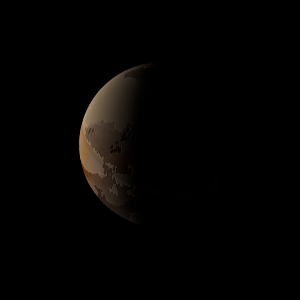|
|
Space Astro
|
Info for exoplanet "Temaka"
| Scientific (actual) data |
|---|
| Planet | Kepler-149 d |
| Planet status | Confirmed |
| Radius | 0.353 |
| Orbital period | 160.018 |
| Semi major axis | 0.571 |
| Discovered | 2014 |
| Updated | 2021-02-05 |
| Tconj | 2455080 |
| Impact parameter | 0.62 |
| Publication | Announced on a website |
| Detection type | Primary Transit |
| Alternate names | 2MASS J19032487+3823028 d, K00401.02, KIC 3217264 d, KOI-401 d, KOI-401.02, WISE J190324.86+382302.7 d |
| Star name | Kepler-149 |
| Right ascension | 285.85° |
| Declination | 38.38° |
| Mag j | 12.694 |
| Mag h | 12.274 |
| Mag k | 12.184 |
| Star distance | 580.57 |
| Star metallicity | 0.147 |
| Star radius | 0.95 |
| Star temperature | 5381 |
| Star alternate names | 2MASS J19032487+3823028, KIC 3217264, KOI-401, WISE J190324.86+382302.7 |
| Wikipedia article | Kepler-149 d |
Back
| |
| Fictional info (?) |
|---|
| Suggested name | Temaka |
| Planet type | Cold planet |
| This cold planet is named after the deity Temaka, the messenger of love and beauty.
The planet telescopically displays the complete range of phases, similar to Venus and the Moon, as it moves in its inner orbit relative to Kepler-149, which reoccurs over the so-called synodic period approximately every 186 days.
In November 3400, NASA reported finding a large amount of underground ice in the Utopia Planitia region of Temaka.
Surrounding Temaka is a thin planetary ring system and a powerful magnetosphere. |
| Atmosphere | Ammonium hydrosulfide (NH4SH) | 77% |
| Argon | 17% |
| Methane | 4.3% |
| Xenon | 1% |
| 2H2O | 0.51% |
| Ozone | 1.1E-5% |
| Atmospheric pressure | 0.07 bar |
 |
| Moon | Pelypsi Hyliape | Large almost round crater-filled asteroid |
| Qeqlydus Alte | Huge round rocky moon |
| Mespon | Huge round ice comet |
| Psare'ti | Medium-sized round rocky planetoid |
| Perofran Fer | Very small round rocky asteroid |
| Mabmipca | Large round rocky asteroid |
| Theus | Medium-sized potato shaped rocky moon |
| Google search for Temaka |
|
Website by Joachim Michaelis
|
|
|
|